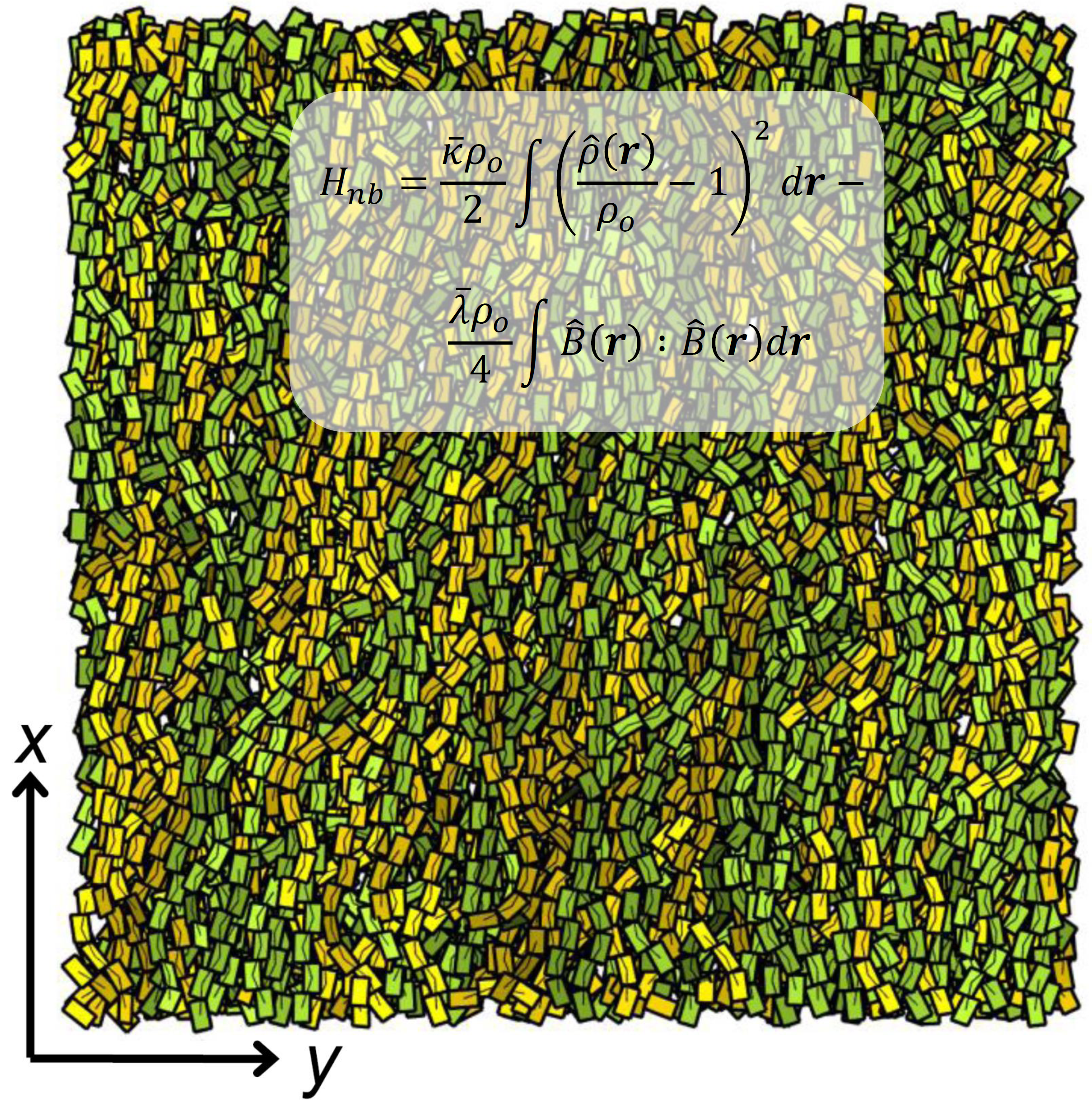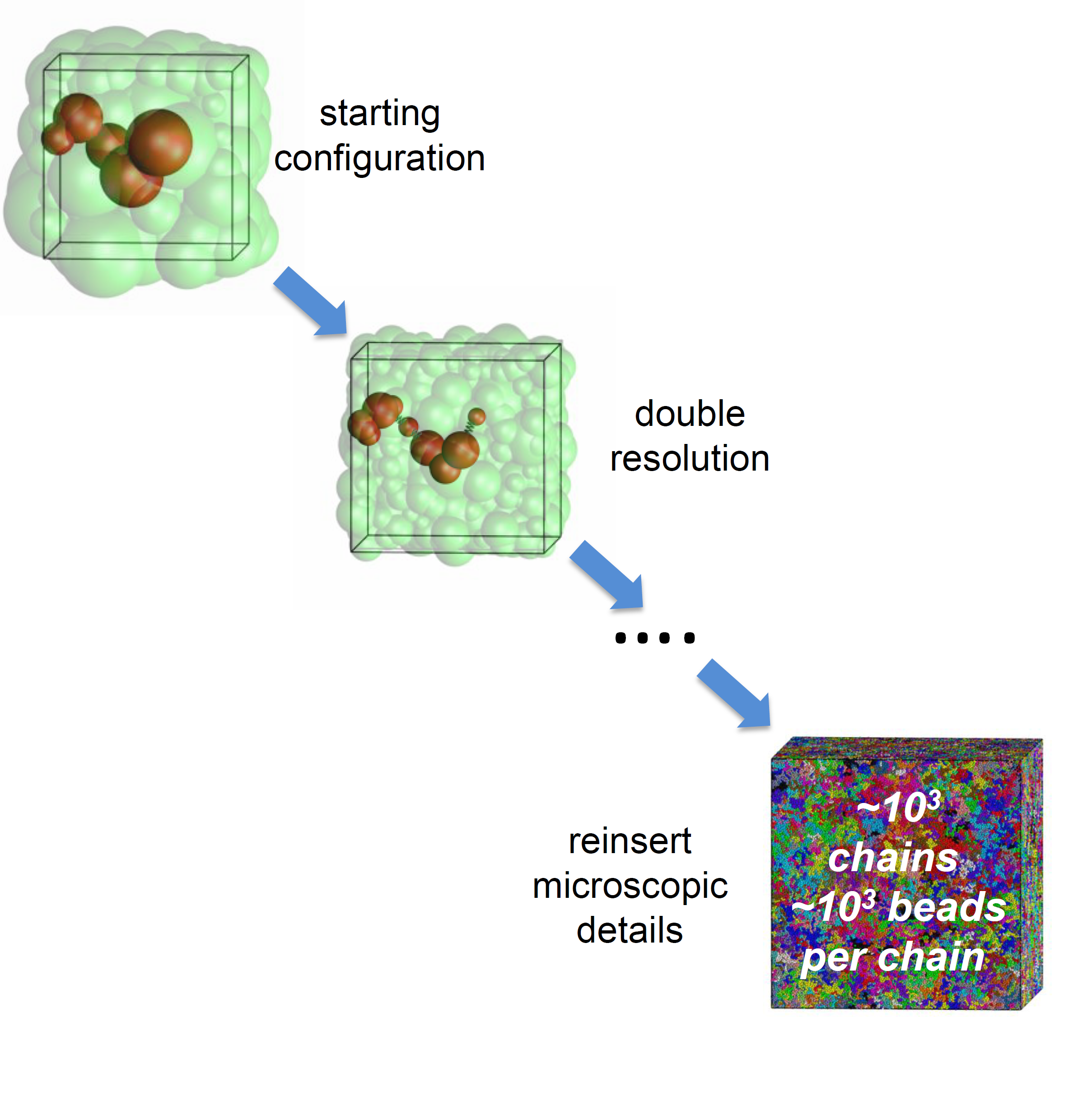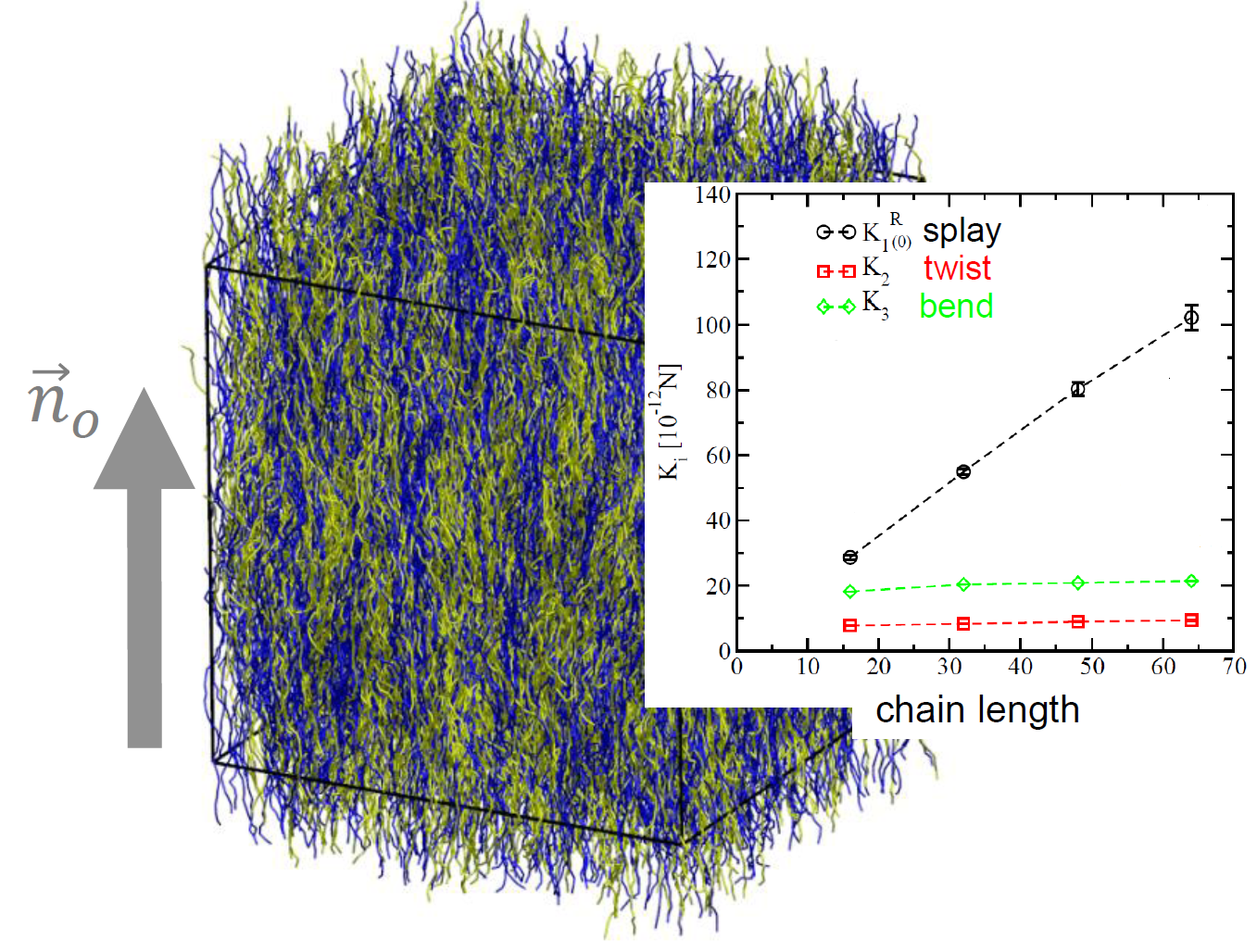Mesoscale studies of Soft Matter with hybrid top-down models

Studying Soft Matter on large time and length scales with computer simulations requires drastically coarse-grained models. In some cases, universalities in mesoscale behavior justify the implementation of simple generic models incorporating chemistry-specific information into a few parameters. In general, however, soft materials have complex mesoscopic structure, seamlessly linked to fine details of molecular architecture and interactions. In this case special mesoscopic models are required, combining drastic coarse-graining with mechanisms incorporating the effect of key microscopic features.
To study Soft Matter systems with complex structure we are developing hybrid models where interactions between particles are introduced through functionals of local order parameters. These functionals are similar to free-energy models in classical density functional theory and phase-field simulations. Introducing interactions through free-energy-like functionals allows us to develop models with desired thermodynamic behavior in a systematic and modular way. Hybrid models provide the basis for efficient simulations employing Monte Carlo sampling and dynamical algorithms. Because of their "dual" structure, hybrid models provide also a framework for field-theoretical methods, such as numerical Self Consistent Field theory and Single-Chain-in-Mean-Field simulations.
Currently, we apply hybrid modeling to study structure-property relationships in various macromolecular systems of fundamental and practical interest. These systems include liquid crystalline mesophases of conjugated polymers, block-copolymers, and multicomponent polymer solutions.
Hierarchical modeling of high-molecular weight polymers

Equilibrating large samples of polymeric liquids comprised of long chain molecules described with microscopic detail is a crucial step for studying many fundamental and application-oriented problems in polymer physics. For this purpose, we develop "divide-and-conquer" strategies based on soft models, where polymers are described by chains of soft blobs. By varying the number of microscopic monomers "lumped" into each blob, we obtain a hierarchy of blob-based models. The polymer liquid is first equilibrated using the crudest model and we perform a sequence of fine-graining steps descending the hierarchy of blob-based representations. Once the blob-based description becomes sufficiently detailed, we reinsert the microscopic degrees of freedom. Because the polymer liquid must be re-equilibrated only on the scale of a few blobs, the total CPU time becomes (up to logarithmic corrections) independent of chain length.
Currently, we are using hierarchical backmapping to study generic and chemistry-specific homopolymer melts as well as multicomponent polymer mixtures. This project is carried out together with Kurt Kremer and international partners: Guojie Zhang (University of Guangzhou), Takahiro Ohkuma (Bridgestone Corporation), and Vagelis Harmandaris (University of Crete).
Fundamental studies in polymer liquid crystals

Polymer liquid crystals (PLC) have a number of intriguing features arising from the combination of the anisotropic liquid-crystalline order with chain connectivity. Computationally efficient models derived from hybrid descriptions enable us to study fundamental questions related to these systems. These questions cover a broad range of topics — from the interpretation of effective potentials entering mesoscopic models of PLC to understanding the behavior of fluctuation spectra and associated material properties.